However you look at it, Opabinia was a remarkably odd-looking creature – so it’s a natural choice for a big cuddly plush toy, right?
I’m guessing most people wouldn’t look at a five-eyed worm with a snaggle-toothed trunk and react with, “Aw, how cute!” Granted, most people aren’t paleontology nerds, either, so your mileage may vary in perspective. It also helps to have said worm creature rendered as an oversized cuddly plush toy; little details like that probably make a difference. Why do I bring up this unusual scenario? My focus for this review is Oakley the Opabinia, the newest member of the Paleo Pals plush family, that’s why! Paleo Pals is a small, independent company focused on fun education surrounding peculiar and obscure animals in the fossil record. Since 2015, the company has been running successful Kickstarter campaigns for plush toys, enamel pins, and other merchandise featuring selected “characters” for selected prehistoric genera. Following Andy the Anomalocaris and Dusty the Diplocaulus, Oakley is the third character/genus to receive a full-sized plush toy.
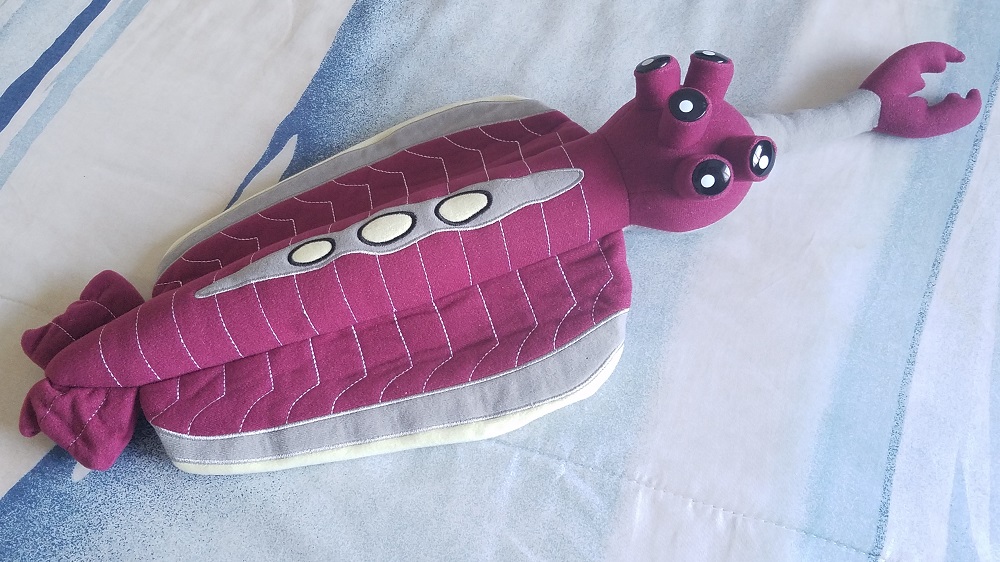
Opabinia regalis, named after the Opabin Pass in Yoho National Park, looked like the sort of creature you’d expect to encounter in a science fiction story. Less than 3 inches long in life, it hailed from the Middle Cambrian period about 505 million years ago. Life on Earth went through quite an upheaval in the Cambrian, as a plethora of weird and wild new creatures appeared throughout the oceans, signaling the birth of many major animal groups which still exist and have become familiar to us today. Over the years, scientists have worked hard to deduce where the Cambrian’s carnival of critters all fit in the animal kingdom family tree. Opabinia has been the subject of much debate regarding its classification, but it is currently considered to be a basal or stem-arthropod, loosely related to contemporaries like the giant predator Anomalocaris.
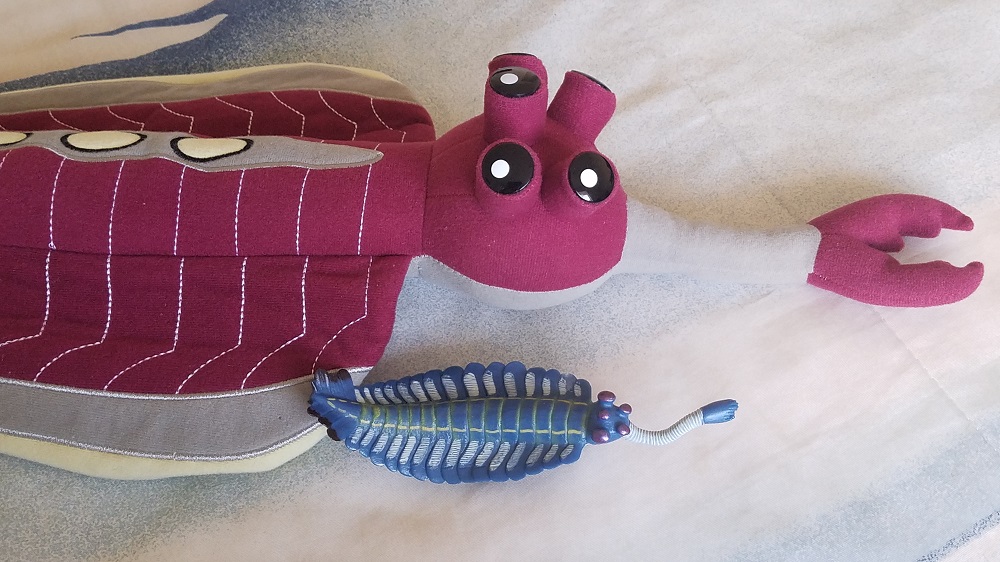
It’s believed this little soft-bodied creature would have foraged for food particles along the ocean floor, using some semblance of legs to walk around, and possibly the lobes along its body for swimming propulsion. Its peculiar trunk would have served to catch prey or other food and carry it to the creature’s mouth, located beneath and behind its head. However you look at it, Opabinia was a remarkably odd-looking creature, and certainly deserving of more pop culture attention.
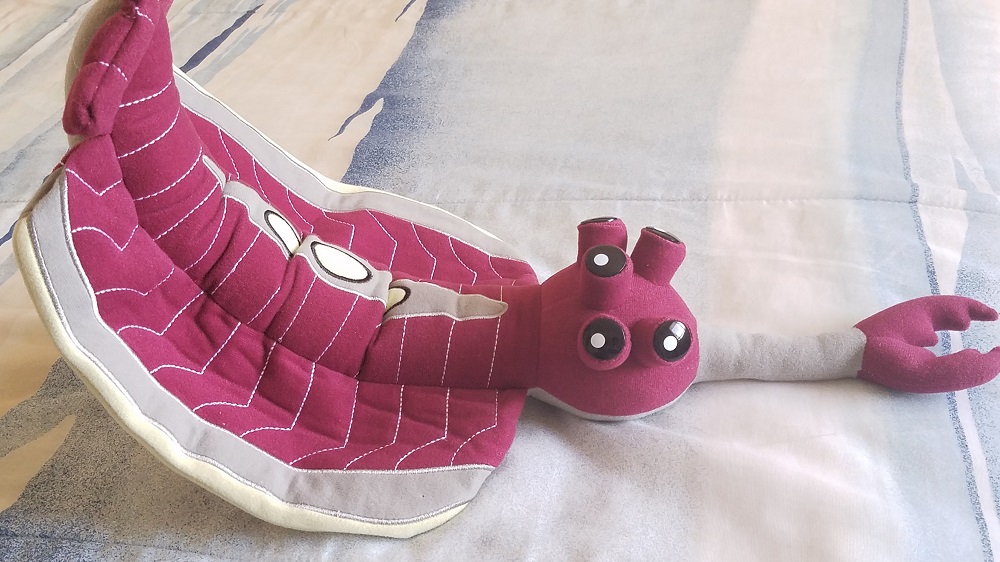
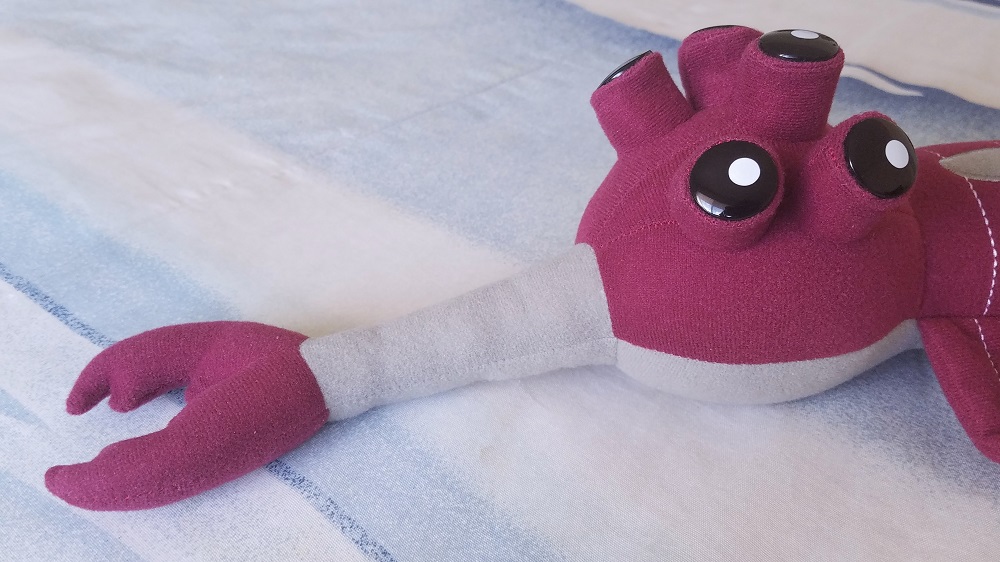
Oakley the Opabinia measures a generous 18.5 inches (47 cm) long from head to tail fin, plus a 6 inch (15 cm) trunk. While prior Paleo Pals were advertised as being life-size renditions of their respective species, Oakley’s huggable dimensions place the toy at nearly 7:1 scale; understandably, a 3-inch stuffed toy wouldn’t be nearly as fun. At such a large scale, the many curious features of the genus are easier to appreciate – although it should be noted that some traits have been stylized and simplified for the toy’s sake. Five solid, glossy black eyes with painted reflection dots sit atop short stalks on the head, which is neatly round in shape. Despite being equally sized on this figure, Opabinia’s eyes are thought to have varied sizes, with the two rear outer eyes being larger than the rest.

The trunk, which extends straight out from the front of the head, would appear striated and stretchable in real life; for the figure it has been streamlined into a single part, probably for simpler manufacturing. The claw is posed laterally with three spikes on each end – simplified from the original five, again likely for manufacturing purposes. The animal’s true mouth has been faithfully sewn underneath on the far back of the head.
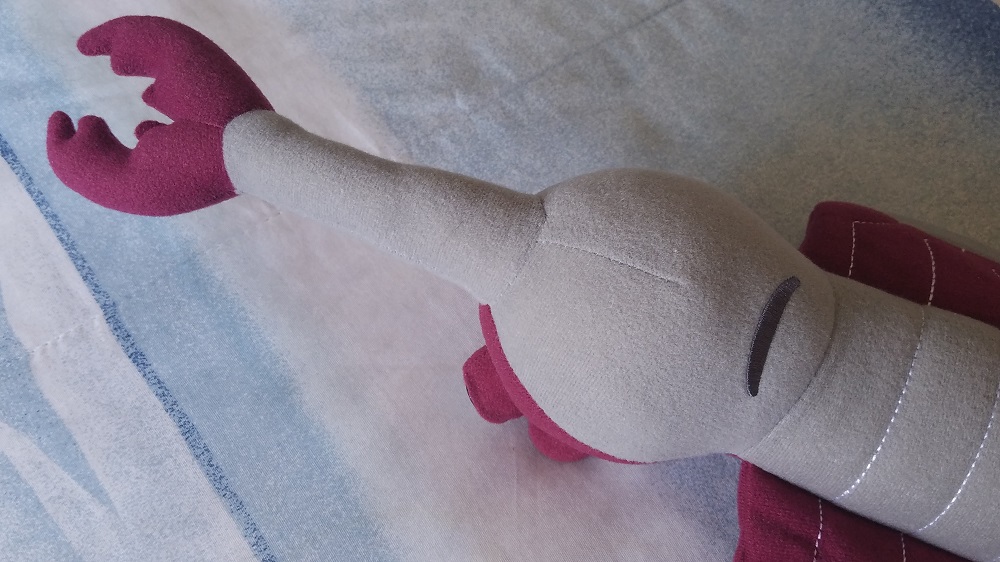
Oakley’s body has 13 marked segments, not counting the head and the tail nub (fossils indicate Opabinia had up to 15 body segments), with corresponding pairs of flaps (lobes) to each side. All the lobes on each side of the figure have been stitched together, resembling singular large fins, but each lobe is distinguished with white stitching in the same manner as the body segments. The three pairs of tail fans are likewise stitched together for simplicity’s sake. Although it’s believed that Opabinia had gills along its lobes, as well as small “legs” along the underneath of its body, these traits have been omitted for the plush toy, giving a more streamlined appearance to the creature.

The toy is firmly built, but gently squishable; the lobes are unfluffed, and a harder embroidery is used for the mouth and certain pattern outlines. The figure is generally fairly rigid and holds its shape, but it can still be twisted and bent to a reasonable extent for playing purposes. Interestingly, there has been some debate over how flexible Opabinia was in real life.
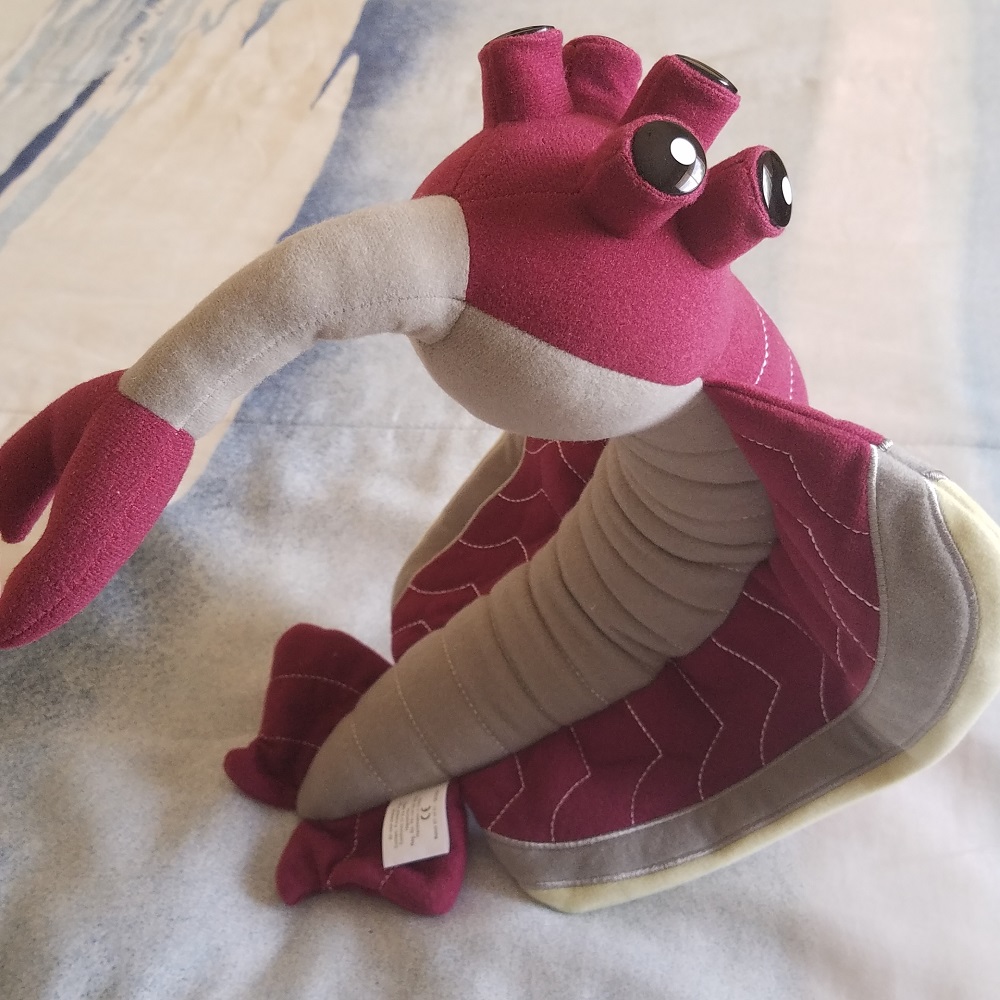
Overlapping the body segments and lobes are striped and spotted patterns. Such markings are entirely speculative, but they serve to break up the basic silhouette of the figure in a simple manner, and offer more coloration opportunities. Nothing is known about what color Opabinia might have been, so artists have relatively free reign on the matter. Marine invertebrates today are certainly known to come in bold and varied colors. Oakley boasts a fairly modest, but appealing burgundy and grey color scheme with additional yellow spots and stripes on the back and on the edges of the lobes, plus some black highlights. The white stitching on the body and lobes also helps break up the body coloration, and the mouth stitching is done in a darker, silvery grey to distinguish it better from the main head. It’s hard to say how different colors may have benefitted Cambrian life for camouflage or communication, but at least for the modern bedroom environment, Oakley should fit in comfortably.
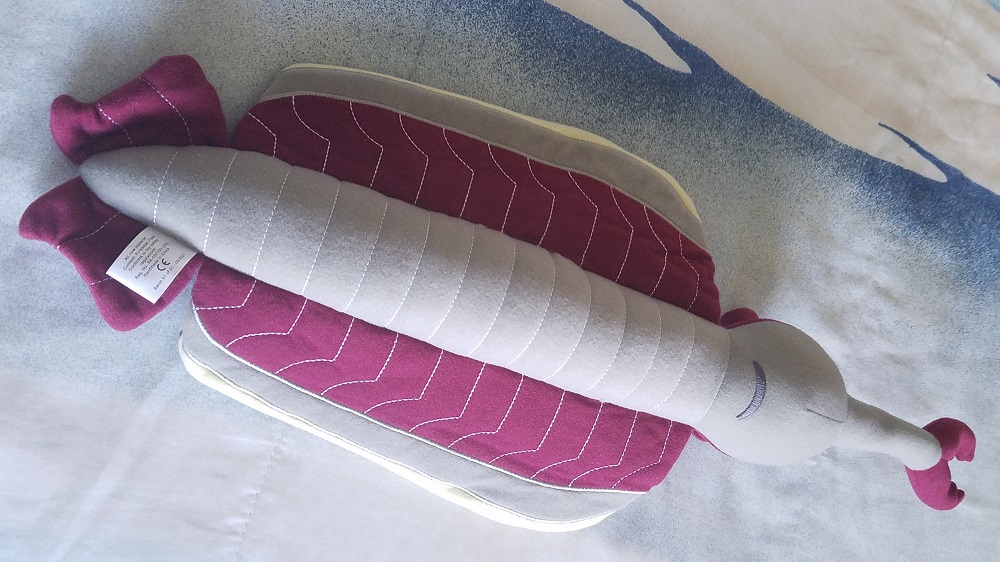
Oakley the Opabinia is a finer and more expensive toy than one might want for a simple kids’ stuffed toy, but any paleo fan and their family should get a kick out of having one of these five-eyed critters around the house. Opabinia just might be one of the weirdest (and coolest) creatures in the entire fossil record, so Oakley has made a delightful addition to my own collection to love and admire, and it looks right at home next to fellow Paleo Pal Dusty (alas, I don’t have Andy to compare with at the time of this writing). Sadly, Oakley is not currently available for sale anymore – complications in 2020 prevented the company from having additional stock beyond the Kickstarter campaign available. However, the creators have expressed their desire to remedy this by the end of the year, so I recommend watching the Paleo Pals website and looking over the rest of their nifty Opabinia-related products in the meantime.
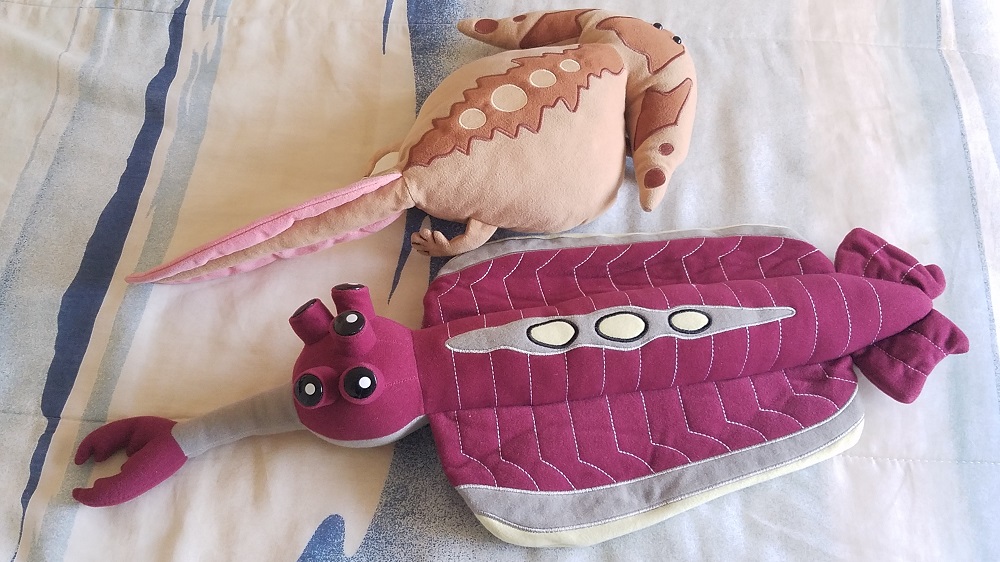
Disclaimer: links to Ebay and Amazon on the DinoToyBlog are affiliate links, so we make a small commission if you use them. Thanks for supporting us!




Update: it sounds like Oakley the Opabinia won’t be coming back in stock anytime soon, as the artist decided to move away from plush toys in favor of expanding their overall brand. They still sell other Oakley merch on the website, but anyone waiting for a plush is officially out of luck, I’m afraid.
I wish these were sold in toy stores.
I definitely responded with ‘aw, how cute.’